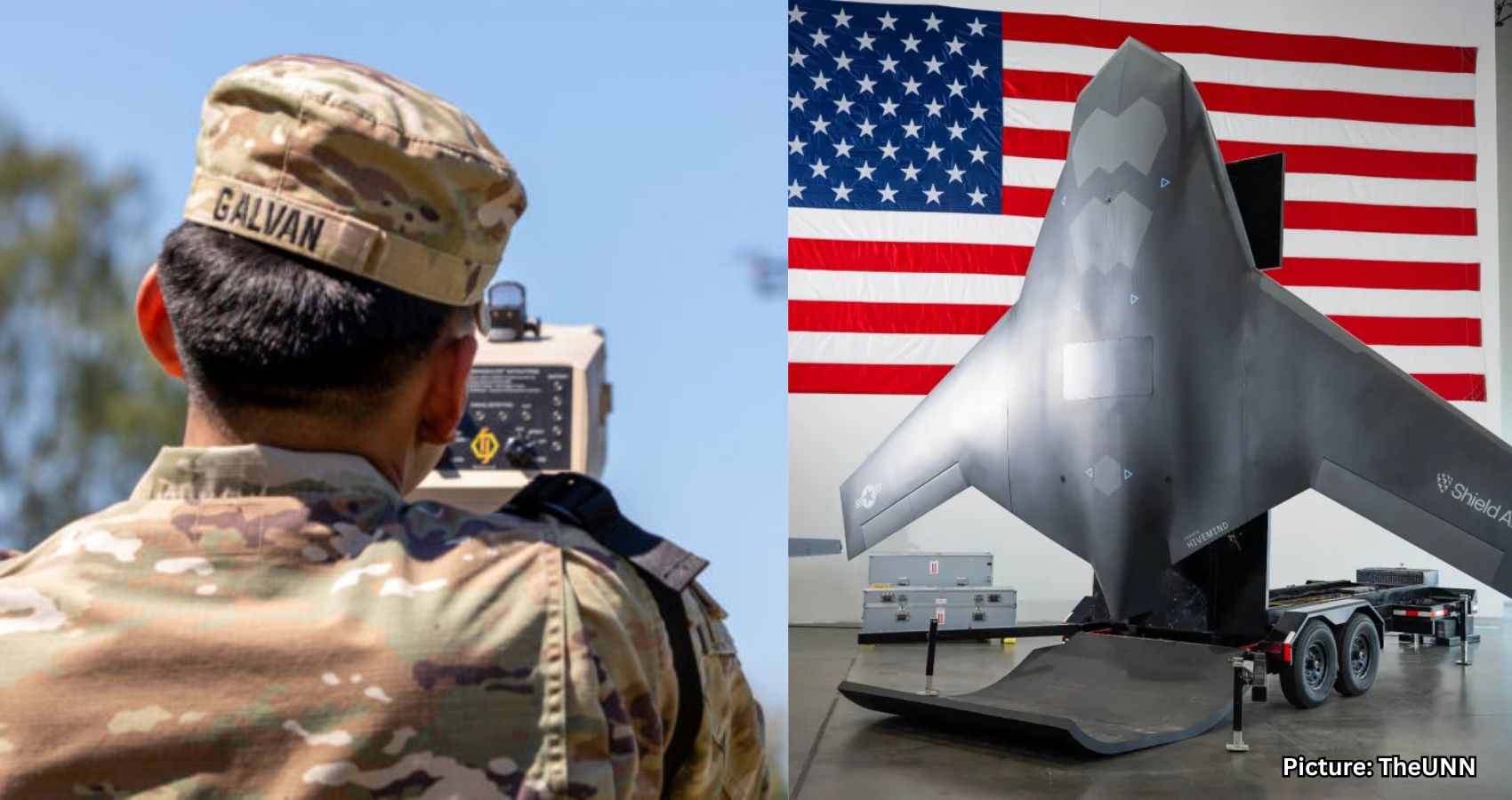Shield AI has introduced the X-BAT, an AI-driven fighter jet designed to counter China’s anti-access strategy by operating independently of runways, GPS, and constant communication.
In a rapidly evolving military landscape, analysts have identified a concerning strategy employed by China: targeting U.S. fighter jets before they can even take off. This tactic has been evident in various conflicts, where disabling enemy aircraft on the ground has often been the initial move. For instance, Israel’s recent strikes on Iranian nuclear sites began with the destruction of runways, effectively grounding Tehran’s air force. Similarly, Russia and Ukraine have targeted airfields to cripple each other’s air capabilities, while India’s clashes with Pakistan saw early assaults on Pakistani air bases.
Taking these lessons to heart, the People’s Liberation Army (PLA) has invested heavily in long-range precision missiles, including the DF-21D and DF-26, designed to neutralize U.S. aircraft carriers and strike American airfields across the Pacific. The overarching goal is to keep U.S. air power out of reach before it can be deployed.
In response to this escalating threat, U.S. defense technology firm Shield AI has unveiled a groundbreaking solution: the X-BAT, an AI-piloted fighter jet capable of operating without runways, GPS, or constant communication links. This innovative aircraft is designed to think, fly, and engage autonomously.
The X-BAT can take off vertically, reach altitudes of 50,000 feet, and cover distances exceeding 2,000 nautical miles. It is equipped to execute both strike and air defense missions using an onboard autonomy system known as Hivemind. This allows the aircraft to operate from ships, small islands, or makeshift sites—locations where traditional jets cannot function effectively. The specific dash speed of the aircraft remains classified.
“China has built this anti-access aerial denial bubble that holds our runways at risk,” said Armor Harris, Shield AI’s senior vice president of aircraft engineering, in an interview with Fox News. “They’ve basically said, ‘We’re not going to compete stealth-on-stealth in the air — we’ll target your aircraft before they even get off the ground.’”
The X-BAT’s design allows three units to occupy the same space as a single legacy fighter or helicopter. Harris noted that while the U.S. has spent decades enhancing stealth and survivability in the air, it has inadvertently left its forces vulnerable on the ground. “The way to solve that problem is mobility,” he explained. “You’re always moving around. This is the only VTOL fighter being built today.”
One of the standout features of the X-BAT is its Hivemind autonomy, which enables it to operate in environments where traditional aircraft would struggle due to jamming or denial of communication. The system utilizes onboard sensors to assess its surroundings, navigate around threats, and identify targets in real time. “It’s reading and reacting to the situation around it,” Harris stated. “It’s not flying a pre-programmed route. If new threats appear, it can reroute itself or identify targets and then ask a human for permission to engage.”
Harris emphasized the importance of human oversight in the decision-making process regarding the use of lethal force. “It’s very important to us that a human is always involved in making the use of lethal force decision,” he said. “That doesn’t mean the person has to be in the cockpit — it could be remote or delegated through tasking — but there will always be a human decision-maker.”
Shield AI anticipates that the X-BAT will be combat-ready by 2029, offering performance comparable to fifth- or sixth-generation fighters at a fraction of the cost of manned aircraft. Its compact design allows for greater flexibility, enabling commanders to launch multiple X-BATs from limited spaces.
While specific pricing details have not been disclosed, Shield AI indicates that the X-BAT is positioned within the same cost range as the Air Force’s Collaborative Combat Aircraft (CCA) program, which focuses on next-generation autonomous wingmen. The company aims to scale production to maintain affordability and sustainability throughout the aircraft’s lifecycle, challenging the traditional “fighter cost curve.”
According to estimates, the X-BAT could deliver a tenfold improvement in cost-effectiveness compared to legacy fifth-generation jets, including the F-35, while remaining “affordable and attritable” enough to be deployed in high-stakes combat scenarios.
Shield AI is currently in discussions with both the Air Force and Navy regarding the integration of the X-BAT into future combat programs, as well as exploring joint development opportunities with several allied militaries.
Harris envisions the X-BAT as a key component in a generational shift toward distributed airpower, akin to the transformation SpaceX brought to the space industry. “Historically, the United States had a small number of extremely capable, extremely expensive satellites,” he noted. “Then you had SpaceX come along and put up hundreds of smaller, cheaper ones. The same thing is happening in air power. There’s always going to be a role for manned platforms, but over time, unmanned systems will outnumber them ten-to-one or twenty-to-one.”
Ultimately, Harris believes this shift is crucial for restoring deterrence through enhanced flexibility. “X-BAT presents an asymmetric dilemma to an adversary like China,” he said. “They don’t know where it’s coming from, and the cost of countering it is high. It’s an important part of a broader joint force that becomes significantly more lethal.”
Source: Original article

